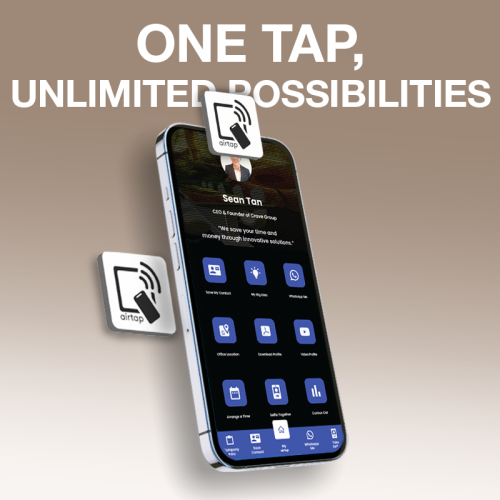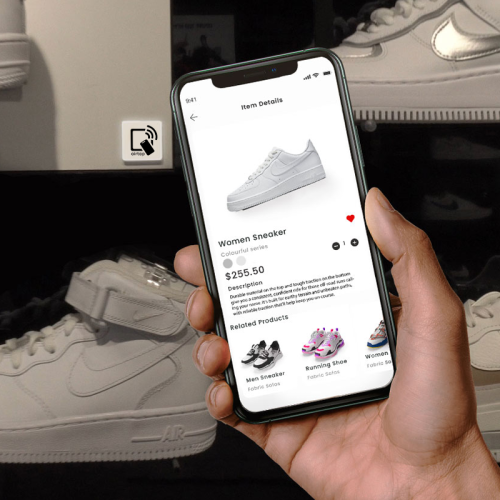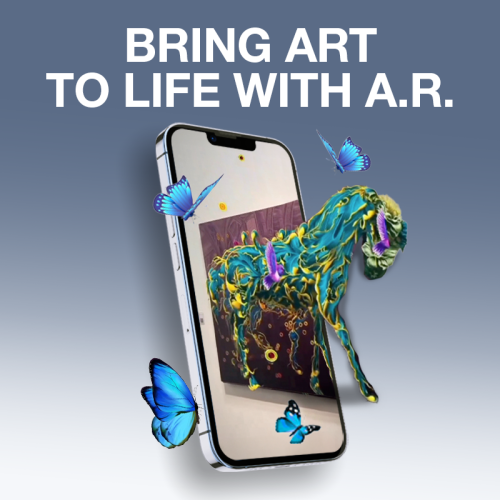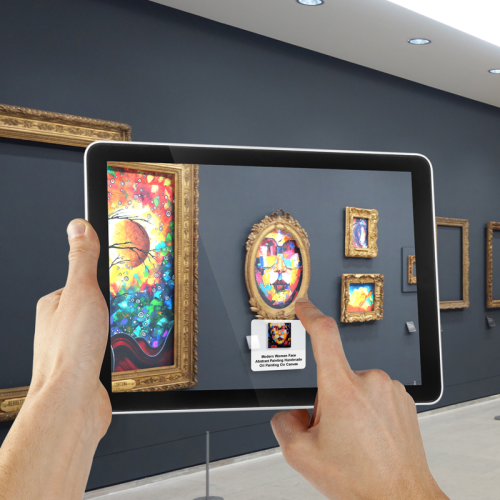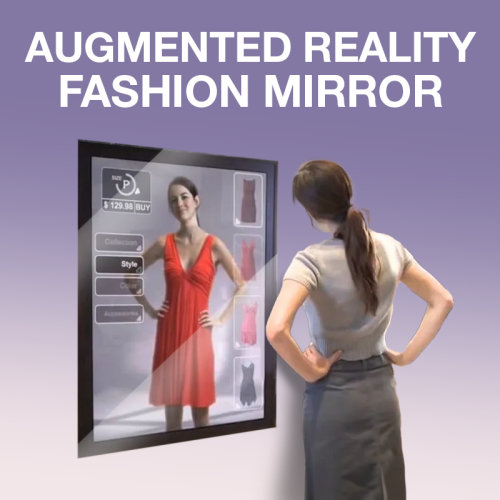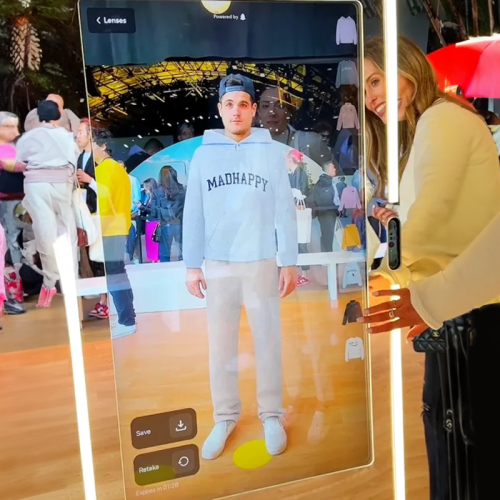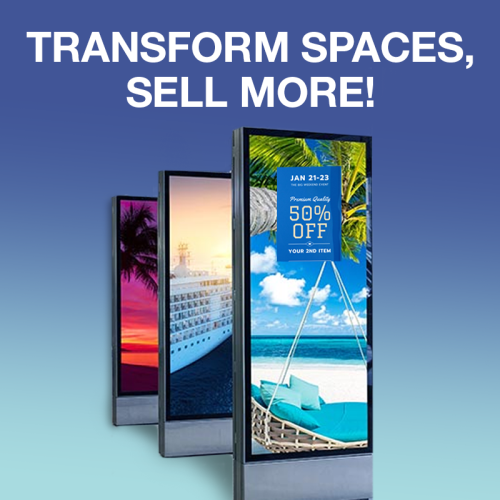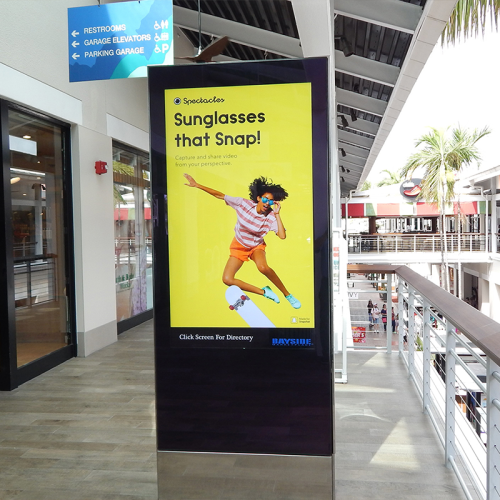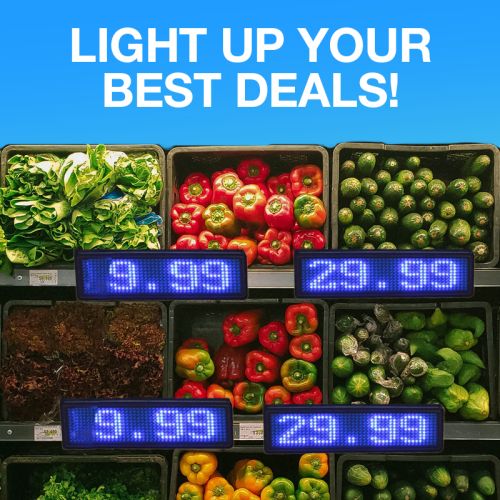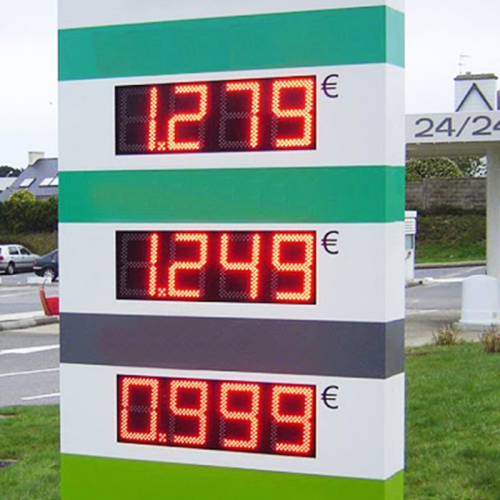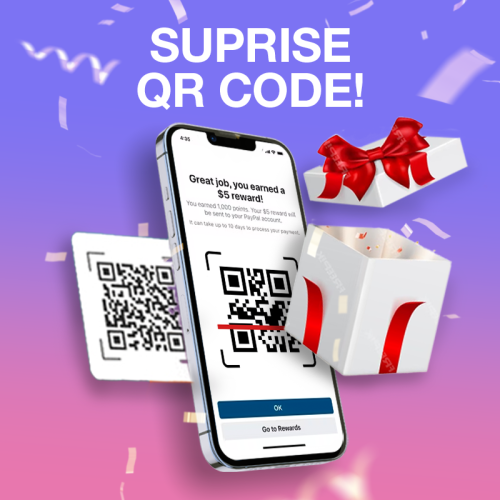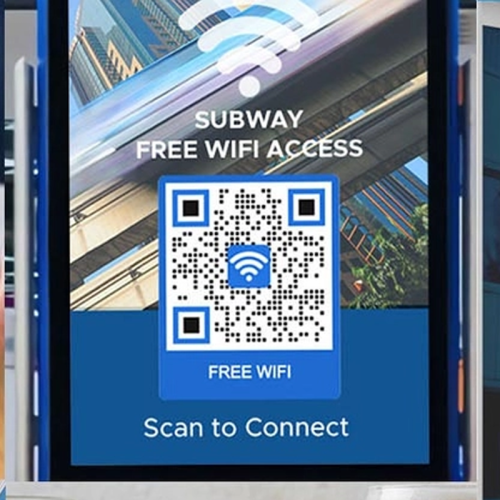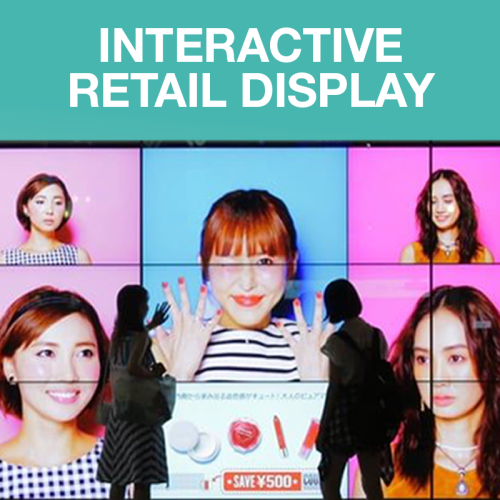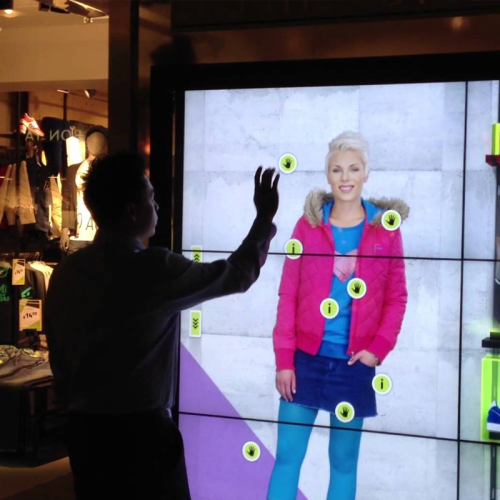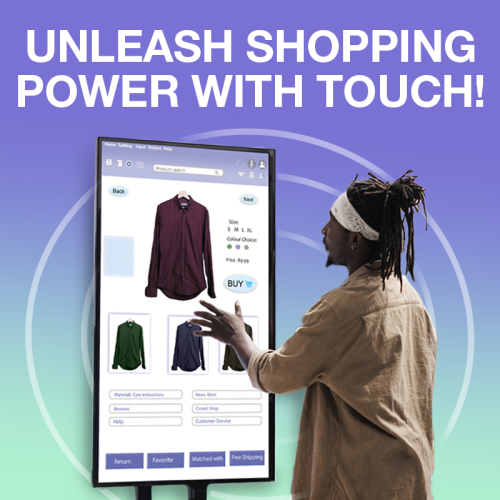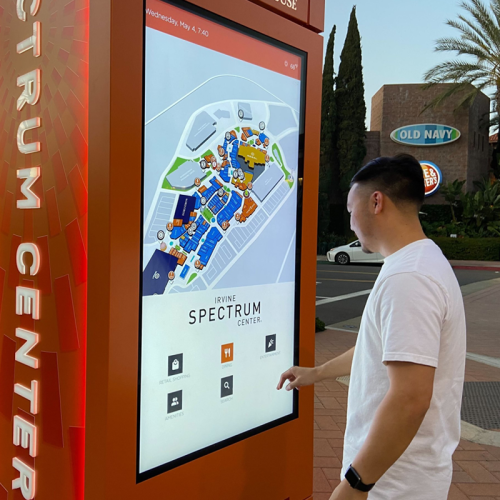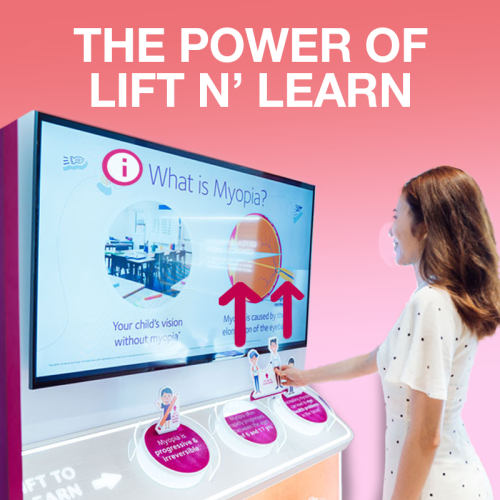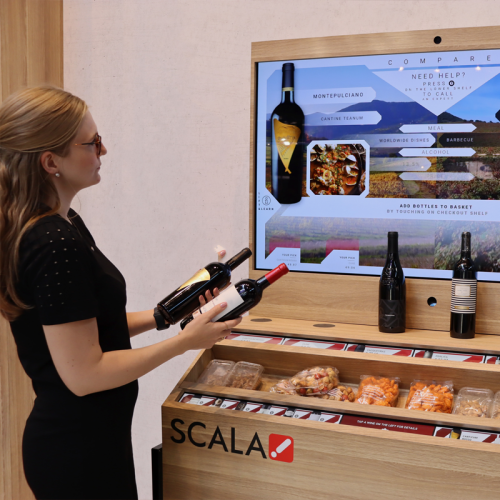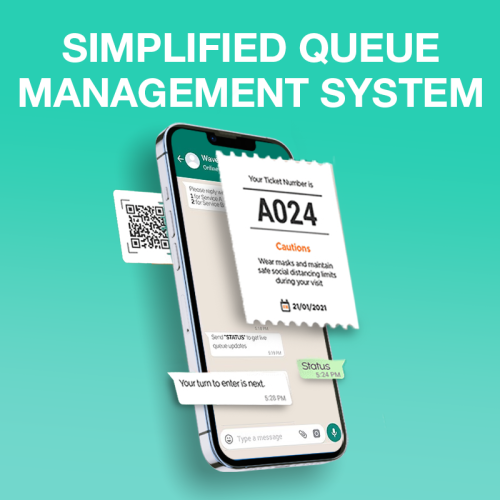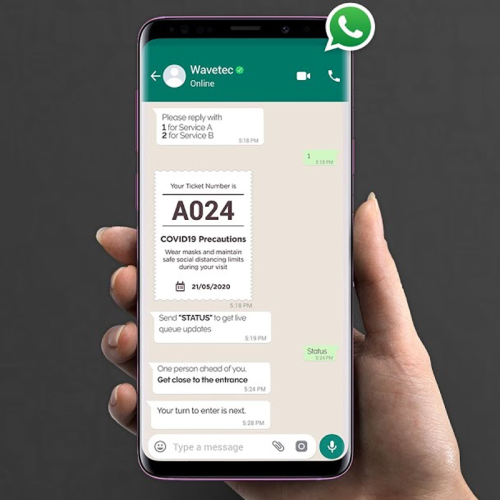In Store
Airtap Sticker
Airtap Sticker refers to a technology that utilizes Near Field Communication (NFC) for quick and contactless interactions between a customer’s device and NFC-enabled tags or devices. NFC is a short-range wireless communication technology that allows data to be transferred between devices with a simple tap or proximity. In retail environments, Airtap Sticker can be implemented for various purposes, including product information retrieval, mobile payments, loyalty programs, and more.
Augmented Reality Alive Gallery
An Augmented Reality (AR) Alive Gallery refers to a physical retail space that incorporates augmented reality technology to bring static objects or displays to life through digital enhancements. This immersive experience allows customers to interact with and experience products or visual elements in a more dynamic and engaging way by overlaying digital content onto the real-world environment.
Augmented Reality Mirror
An Augmented Reality (AR) Mirror in an in-store context refers to a mirror equipped with augmented reality technology that overlays digital elements onto the reflection of the user. This immersive experience allows customers to try on virtual products, visualize different styles, and receive additional information in real-time. AR mirrors are often used in industries such as fashion, beauty, and eyewear to enhance the in-store shopping experience.
Digital Signage
Digital Signage in an in-store context refers to the use of digital display screens, monitors, or interactive kiosks to deliver dynamic and visually engaging content within physical retail environments. These digital displays are used to convey information, promotions, advertisements, and other relevant content to enhance the overall customer experience and influence purchasing decisions.
Display LED Smart Tag
A Display LED Smart Tag in an in-store context refers to a digital signage solution that utilizes LED (Light Emitting Diode) technology to create smart and dynamic display tags for products or shelves within a retail environment. These smart tags can be used to provide real-time information, pricing updates, promotions, and other relevant content. Unlike traditional paper-based tags, LED smart tags can be remotely controlled and updated, offering a more flexible and interactive way to manage in-store displays.
Interactive QR Code
An interactive QR code is a scannable code designed to go beyond static information, offering users a dynamic experience, ranging from multimedia content and augmented reality to personalized engagement and real-time updates.
Interactive Retail Window
An Interactive Retail Window in an in-store context refers to a storefront window that incorporates interactive technology to engage passersby and potential customers. This technology allows people to interact with digital content displayed on the window, creating an immersive and dynamic experience even when the store is closed. Interactive retail windows often use technologies such as touchscreens, gesture recognition, augmented reality, or projections to enable interaction.
Interactive Touchscreen Display
An Interactive Touchscreen Display in an in-store context refers to a display technology that allows users to interact with digital content by directly touching the screen. These screens are often integrated into kiosks, product displays, or informational stations within retail environments. Users can engage with the content, navigate through information, and sometimes even complete transactions through touch gestures.
Lift and Learn
Lift and Learn refers to an interactive retail technology that allows customers to pick up or interact with physical products, and in response, the system provides additional information, multimedia content, or other relevant details about the product. This technology often involves the use of sensors, RFID (Radio-Frequency Identification), NFC (Near Field Communication), or other technologies to detect when a product is lifted or touched.
Queue Management System
A Queue Management System (QMS) in an in-store context refers to a set of tools and processes designed to efficiently organize and manage customer queues or lines within a physical retail environment. The primary goal is to improve the customer experience by minimizing wait times, enhancing service efficiency, and providing a more organized flow of customers through the store.

